Tianze Zhou
XRL-Bench: A Benchmark for Evaluating and Comparing Explainable Reinforcement Learning Techniques
Feb 20, 2024



Abstract:Reinforcement Learning (RL) has demonstrated substantial potential across diverse fields, yet understanding its decision-making process, especially in real-world scenarios where rationality and safety are paramount, is an ongoing challenge. This paper delves in to Explainable RL (XRL), a subfield of Explainable AI (XAI) aimed at unravelling the complexities of RL models. Our focus rests on state-explaining techniques, a crucial subset within XRL methods, as they reveal the underlying factors influencing an agent's actions at any given time. Despite their significant role, the lack of a unified evaluation framework hinders assessment of their accuracy and effectiveness. To address this, we introduce XRL-Bench, a unified standardized benchmark tailored for the evaluation and comparison of XRL methods, encompassing three main modules: standard RL environments, explainers based on state importance, and standard evaluators. XRL-Bench supports both tabular and image data for state explanation. We also propose TabularSHAP, an innovative and competitive XRL method. We demonstrate the practical utility of TabularSHAP in real-world online gaming services and offer an open-source benchmark platform for the straightforward implementation and evaluation of XRL methods. Our contributions facilitate the continued progression of XRL technology.
Towards Solving Fuzzy Tasks with Human Feedback: A Retrospective of the MineRL BASALT 2022 Competition
Mar 23, 2023

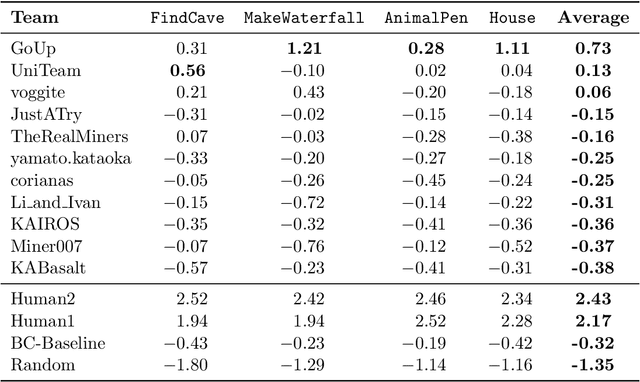
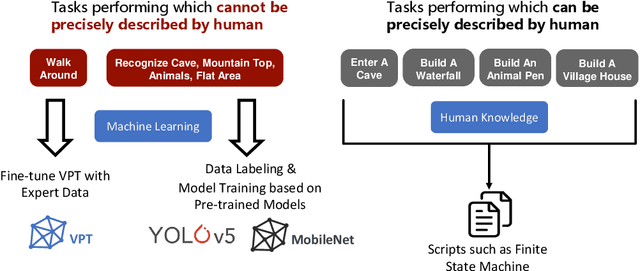
Abstract:To facilitate research in the direction of fine-tuning foundation models from human feedback, we held the MineRL BASALT Competition on Fine-Tuning from Human Feedback at NeurIPS 2022. The BASALT challenge asks teams to compete to develop algorithms to solve tasks with hard-to-specify reward functions in Minecraft. Through this competition, we aimed to promote the development of algorithms that use human feedback as channels to learn the desired behavior. We describe the competition and provide an overview of the top solutions. We conclude by discussing the impact of the competition and future directions for improvement.
Cooperative Multi-Agent Transfer Learning with Level-Adaptive Credit Assignment
Jun 03, 2021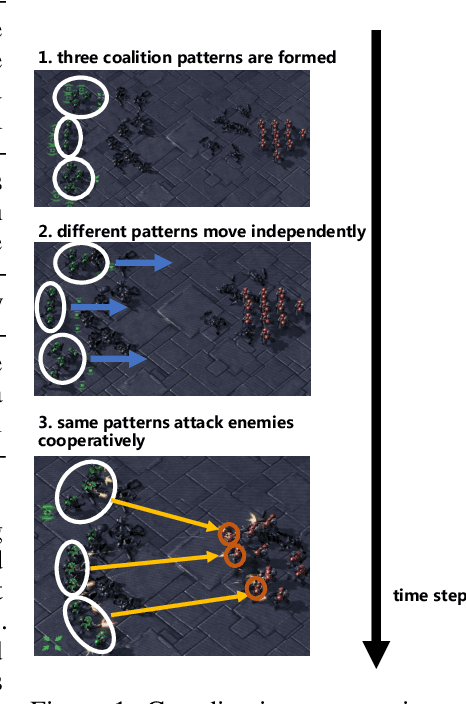

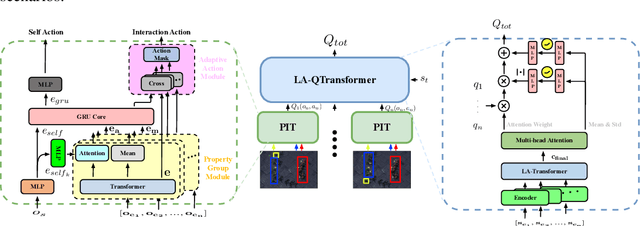
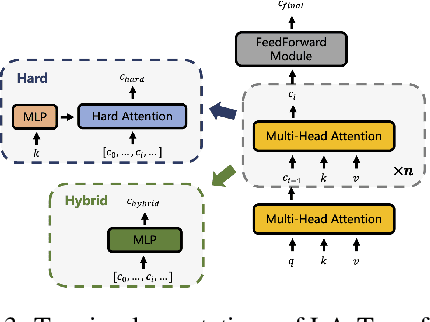
Abstract:Extending transfer learning to cooperative multi-agent reinforcement learning (MARL) has recently received much attention. In contrast to the single-agent setting, the coordination indispensable in cooperative MARL constrains each agent's policy. However, existing transfer methods focus exclusively on agent policy and ignores coordination knowledge. We propose a new architecture that realizes robust coordination knowledge transfer through appropriate decomposition of the overall coordination into several coordination patterns. We use a novel mixing network named level-adaptive QTransformer (LA-QTransformer) to realize agent coordination that considers credit assignment, with appropriate coordination patterns for different agents realized by a novel level-adaptive Transformer (LA-Transformer) dedicated to the transfer of coordination knowledge. In addition, we use a novel agent network named Population Invariant agent with Transformer (PIT) to realize the coordination transfer in more varieties of scenarios. Extensive experiments in StarCraft II micro-management show that LA-QTransformer together with PIT achieves superior performance compared with state-of-the-art baselines.
Multi-Agent Reinforcement Learning with Graph Clustering
Sep 28, 2020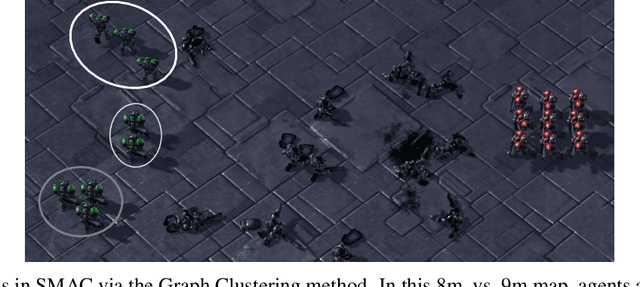
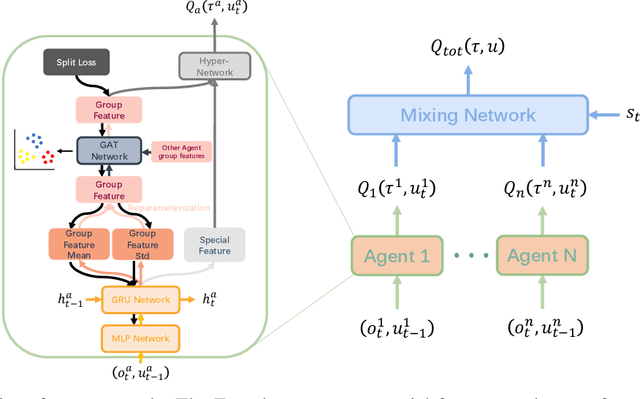
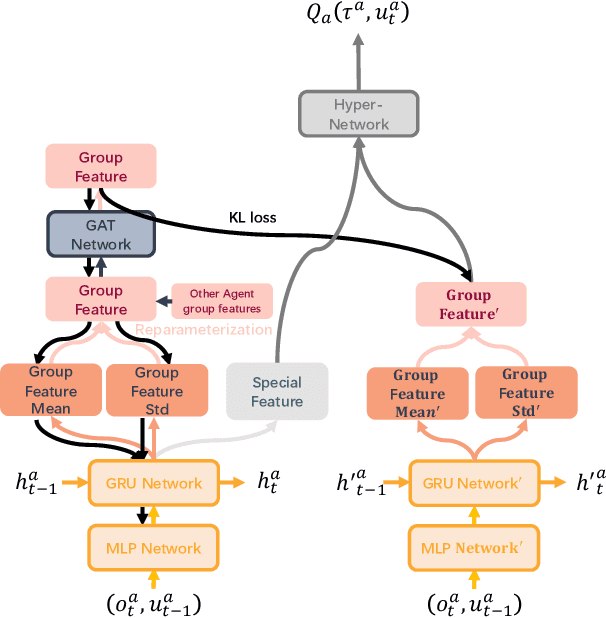
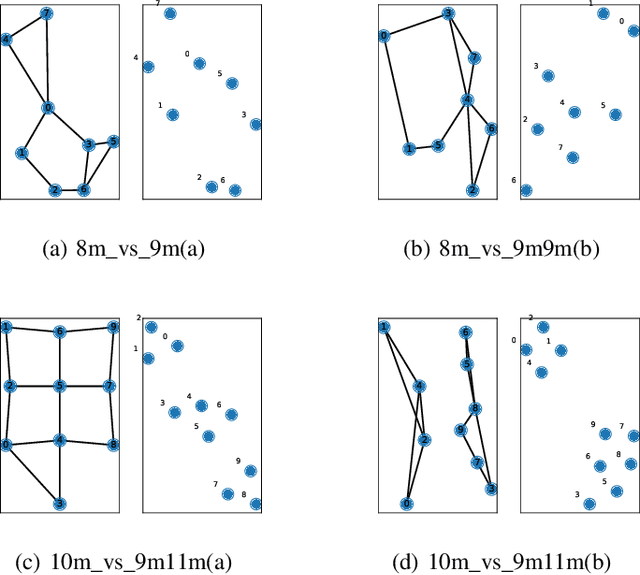
Abstract:In this paper, the group concept is introduced into multi-agent reinforcement learning. Agents, in this method, are divided into several groups, each of which completes a specific subtask, cooperating to accomplish the main task. In order to exchange information between agents, present methods mainly use the communication vector; this can lead to communication redundancy. To solve this problem, a MARL based method is proposed on graph clustering. It allows agents to learn group features adaptively and replaces the communication operation. In this approach, agent features are divided into two types, including in-group and individual features. The generality and differences between agents are represented by them, respectively. Based on the graph attention network(GAT), the graph clustering method is introduced to optimize agent group feature. These features are then applied to generate individual Q value. The split loss is presented to distinguish agent features in order to overcome the consistent problem brought by GAT. The proposed method is easy to be converted into the CTDE framework by using the Kullback-Leibler divergence method. Empirical results are evaluated on a challenging set of StarCraft II micromanagement tasks. The result reveals that the proposed method achieves significant performance improvements in the SMAC domain, and can maintain a great performance with the increase in the number of agents.
 Add to Chrome
Add to Chrome Add to Firefox
Add to Firefox Add to Edge
Add to Edge